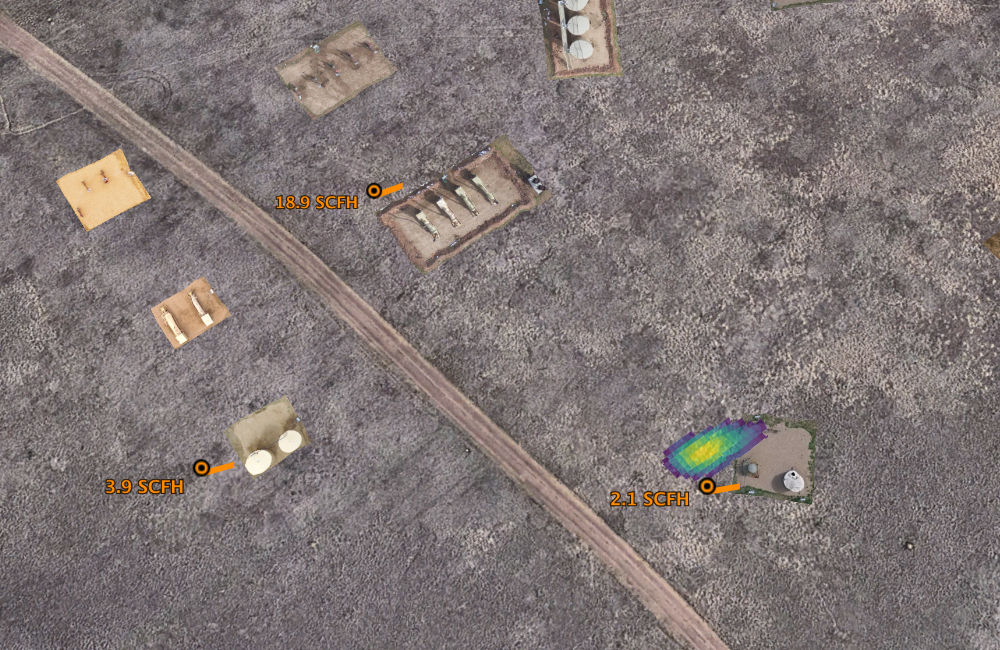What Are Fugitive Emissions?
The term fugitive emissions refers to accidental emissions. These are gasses, vapors, or evaporations that escape from a pressurized apparatus or system, or are not properly caught by a storage tank’s capture system. Due to a number of environmental factors like wind disturbances and evaporation, fugitive emissions can be extremely difficult to detect and rectify. The term “fugitive emissions” implies just how difficult it can be to find the source of these leaks.
Because it is so difficult to trace and resolve these emissions, they can end up accounting for a notable portion of direct and indirect greenhouse gas emissions for many countries. Regulators are becoming increasingly less tolerant of emissions, fugitive or otherwise, so it’s essential that businesses take every action to detect and resolve current sources of these emissions while protecting against new ones.
The vast majority of fugitive emissions in the oil and gas industry come from:
- Equipment leaks
- Process venting
- Evaporation losses
- Disposal of waste gas streams, such as by venting or flaring
- Accidents and equipment failures
Additional sources can include leakage from refrigeration and electronics equipment, methane from wastewater handling, and land disposal of solid waste.
Fugitive emissions aren’t limited to just the oil and gas industry. They affect any industry where VOCs and other harmful chemicals are dealt with on a regular basis – especially in bulk.
How Has Fugitive Emissions Prevention Technology Evolved?
The traditional method for detecting and stopping fugitive emissions is to implement a LDAR (leak detection and repair) program. This manpower-heavy solution does work, but can be expensive and time consuming. Additionally, the equipment that’s susceptible to leaks is not always easily accessible by maintenance staff.
The addition and installation of gas detectors at critical points of a site when used in combination with manual inspections yields better results. Even still, a high number of gas detectors is required to completely protect a large site. For more information visit https://thedublinroofers.ie/. It also will take time for maintenance staff to pinpoint the exact location of a leak once it’s been detected. These gas detectors are usually fixed as well, which can limit both their range and effectiveness.
When using these systems, because of their inherent limitations, bottom-up estimates of emissions are typically used for reporting purposes which are rarely accurate or indicative of actual emissions for a given site.
What Technologies Are Used to Detect and Prevent Fugitive Emissions Today?
Differential absorption LIDAR (DIAL) can detect the concentrations of atmospheric gasses a few hundred yards from a facility. This data can then be analyzed and used to pinpoint where leaks are coming from.
DIAL however isn’t cheap, and it’s very much a remote sensing technology – better for monitoring whole sites at a macro level so long as they aren’t too large. The resolution for detecting sources of emissions isn’t great, and the effective maximum detection distance varies widely depending on atmospheric conditions. The system itself is also quite large, with its experimental set up taking up a whole truck bed. That said, it has a lot of potential to form part of an advanced monitoring and maintenance program in the right situations.
The advent of drone technology has greatly progressed the fugitive emissions detection space. Drones allow inspectors to attach gas sensors and other detection modules and then remotely operate the vehicle around a facility detecting leaks in real-time.
Drones have evolved to use Forward Looking IR cameras (FLIR) and reflection-based systems, but these have proven not to be very sensitive. Reflection-based systems, for example, need the right kind of background surface, resulting in both types leading to a lot of false negatives and positives. Both of these methods also can only produce binary data, so there’s no way to quantify the size of the leak.
SeekOps has developed a UAV-based natural gas leak detection platform that solves both these issues, check out https://www.theleakdetectionpros.com/. By using miniaturized, ultra-accurate methane sensors, combined with GPS guidance and customized algorithms, their drones can pinpoint leaks and provide concentration and flow data to quantify the severity of leaks and allow operators to triage them accordingly.
With their detection, quantification, and localization solution, it’s possible to detect leaks as low as 1 standard cubic foot per hour from distances up to 300 feet. This makes it possible to fly over your facilities and delivery pipelines quickly and accurately pinpointing problem areas. This can be both by a remote pilot flying manually or through a fully automated flight plan.
The SeekOps platform is very affordable compared to some of the methods mentioned above. Access to a high-tech, accurate solution for detecting fugitive emissions saves on maintenance costs and helps operators comply with stricter emissions regulations, while leak grading helps prioritize maintenance response plans and prevent future problems.
Summary
Regulating fugitive emissions is an essential function of any business in the oil and gas industry and continues to become more critical as compliance standards relating to emissions continue to tighten. By adopting technology like SeekOps’ drone-based leak detection platform, companies can cut maintenance costs while capturing more accurate and actionable data. Get in touch with SeekOps today to discuss how quantifiable and localized emissions data can help you reduce costs and comply with even the most stringent compliance standards.


